Sunday, January 1st 2012

HD 7970 Overclocked to 1.26 GHz: 28 nm Tech Really Stretches Its Legs
Welcome to the first TechPowerUp news post of 2012! Read on for a couple of impressive overclocking feats with the HD 7970 graphics card.
It looks like the new AMD Radeon HD 7970 could be a bit of a dark horse and a lot more potent than its stock specifications would suggest - excellent for creating a competitive graphics card market. The reviews at stock speeds show the flagship HD 7970 to be around 10-15% faster than NVIDIA's flagship GTX 580, which doesn't seem all that impressive since the GTX 580 has been on the market for over a year now. However, what the reviews haven't really shown, is what kind of an overclocking monster the HD 7970 is. It definitely looks like AMD could have easily beaten the GTX 580 by a much bigger margin than they did, had they wanted to and it makes one wonder why they didn't.
VR-Zone have spent the New Year weekend overclocking this beast, having reached a whopping 1.26 GHz core clock speed with their HD 7970 - and decent benchmark improvements to go with it. Also, with the fan at 100%, the card never got above a very comfortable 68 degrees centigrade while running Furmark, which is amazing considering how this test is specifically designed to heat a graphics card to the max - but please see the update at the bottom of the article. The stock cooler may be noisy, but it's certainly very effective: an excellent result which will prolong the working life of the card.VR-Zone has tested the card with the latest Sandy Bridge-E Core i7 3960X 6 core CPU. This has a stock clock of 3300 MHz, but they overclocked it to a huge 4680 MHz (42%) to wring the best performance from the card possible. Now, there's an achievement right there. Note that they didn't reveal what CPU cooler was used to achieve this overclock.
The GPU-Z screenshot shows the core clock speed of 1267 MHz. This was achieved "with core voltage bumped from 1.15v to 1.25v using publicly available software and a special bios (9th Jan reveal), we got the core clock speed up to 1267MHz." The standard card is BIOS-locked to a maximum clock ceiling of 1125 MHz on the core and 1500 MHz on the memory, which it can handle with ease.
3DMark 11 Performance Preset (stock is P8227)3DMark 11 Extreme Preset (stock is X2764)ComputeMark (stock is 5920 marks)Unigine Heaven 2.5 (stock is 69.6fps)With results like these, AMD have set a high bar which NVIDIA will have its work cut out to beat and it'll be really interesting to see what Kepler brings to the table in the next few months. Also, overclocking legend Shamino has managed to push one of these cards to an astounding 1.7 GHz+ on LN2! Read about it here.
So, as of January 1st 2012, the HD 7970 extends its lead as the undisputed single GPU enthusiast card of choice for straight-line framerate performance and smooth gameplay in demanding games. A great way for AMD to start the year.
UPDATE: Notice how the Furmark screenshot shows the card achieving a mere 40fps at 1280x720? A card in this performance bracket can obviously do way better than this. This poor framerate will be down to the power throttling circuitry protecting the card under such conditions by slowing down the performance severely. If the throttle was disengaged the card would perform spectacularly for a short while and then likely cook itself to death, especially with this overclock. Thanks to one of our eagle-eyed forum members for spotting this.
It looks like the new AMD Radeon HD 7970 could be a bit of a dark horse and a lot more potent than its stock specifications would suggest - excellent for creating a competitive graphics card market. The reviews at stock speeds show the flagship HD 7970 to be around 10-15% faster than NVIDIA's flagship GTX 580, which doesn't seem all that impressive since the GTX 580 has been on the market for over a year now. However, what the reviews haven't really shown, is what kind of an overclocking monster the HD 7970 is. It definitely looks like AMD could have easily beaten the GTX 580 by a much bigger margin than they did, had they wanted to and it makes one wonder why they didn't.
VR-Zone have spent the New Year weekend overclocking this beast, having reached a whopping 1.26 GHz core clock speed with their HD 7970 - and decent benchmark improvements to go with it. Also, with the fan at 100%, the card never got above a very comfortable 68 degrees centigrade while running Furmark, which is amazing considering how this test is specifically designed to heat a graphics card to the max - but please see the update at the bottom of the article. The stock cooler may be noisy, but it's certainly very effective: an excellent result which will prolong the working life of the card.VR-Zone has tested the card with the latest Sandy Bridge-E Core i7 3960X 6 core CPU. This has a stock clock of 3300 MHz, but they overclocked it to a huge 4680 MHz (42%) to wring the best performance from the card possible. Now, there's an achievement right there. Note that they didn't reveal what CPU cooler was used to achieve this overclock.
The GPU-Z screenshot shows the core clock speed of 1267 MHz. This was achieved "with core voltage bumped from 1.15v to 1.25v using publicly available software and a special bios (9th Jan reveal), we got the core clock speed up to 1267MHz." The standard card is BIOS-locked to a maximum clock ceiling of 1125 MHz on the core and 1500 MHz on the memory, which it can handle with ease.
3DMark 11 Performance Preset (stock is P8227)3DMark 11 Extreme Preset (stock is X2764)ComputeMark (stock is 5920 marks)Unigine Heaven 2.5 (stock is 69.6fps)With results like these, AMD have set a high bar which NVIDIA will have its work cut out to beat and it'll be really interesting to see what Kepler brings to the table in the next few months. Also, overclocking legend Shamino has managed to push one of these cards to an astounding 1.7 GHz+ on LN2! Read about it here.
So, as of January 1st 2012, the HD 7970 extends its lead as the undisputed single GPU enthusiast card of choice for straight-line framerate performance and smooth gameplay in demanding games. A great way for AMD to start the year.
UPDATE: Notice how the Furmark screenshot shows the card achieving a mere 40fps at 1280x720? A card in this performance bracket can obviously do way better than this. This poor framerate will be down to the power throttling circuitry protecting the card under such conditions by slowing down the performance severely. If the throttle was disengaged the card would perform spectacularly for a short while and then likely cook itself to death, especially with this overclock. Thanks to one of our eagle-eyed forum members for spotting this.
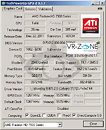
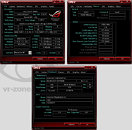
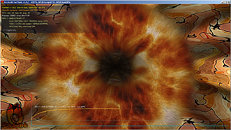
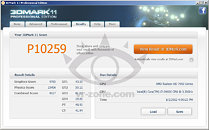
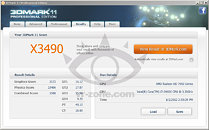

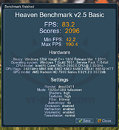
56 Comments on HD 7970 Overclocked to 1.26 GHz: 28 nm Tech Really Stretches Its Legs
That is crazy, 28nm working its magic.
Yes, I bet the 7970 is gonna fly off the shelves with results like this.
But these overclocking scores are outrageous. The architecture seems to really scale well with the overclocks. Kudos, AMD, keep up the great work!
and im sorry i really had to:
Anyone have a Windows 8 bench of this card yet?
Look, my Sandy Bridge upgrade doubled my RAM from 4GB which was plenty, to 8GB, which was way more than enough. However, I had two more slots sitting empty, just looking at me and crying out for more. So, £40 later, I was the proud owner of another 8GB and I've now got a monster 16 gigs in the PC! :rockout: Do I need all of it? Hell no, who cares! :D
EDIT: article updated.
Take the new Mulsanne, for example. Not only is it more powerful than the Camaro, Mustang and Challenger, under strenuous usage it'll be a lot quieter than a hybrid. And, if they were all the same price, I know which I'd buy :P
Just kidding... :D
But seriously, who needs this much horsepower? A 5870 can handle any game out there at pretty decent settings and normal resolutions, so all i can think of are 3x1 or 3x2 Eyefinity setups. I doubt many people have those though...
But I guess my point is this: speed isn't the only factor, and you don't have to sacrifice noise for performance. Given the choice between a Mustang and a comparably priced Audi, for example, I'd pick the Audi. And a lot of the reasoning behind that is to do with the Audi being quieter and using less fuel. If I was in the market for a 7970, and there was a 7950 with a quality PCB and a near-silent aftermarket cooler for the same price or cheaper, I'd take the 7950.
Well, that's a lie - I'd bank the money. But you get the idea :P
But which was made where isn't really relevant to my point. I'm sure (I hope?) that there are U.S. built cars comparable to an Audi.
If not, I wouldn't be prepared to sacrifice on getting what I want in order to reward some worker over another for the sheer good luck of being born in some particular nation, but that's a different story.
It is quite possible to build a powerful, yet silent car - look at the Audi A6 or BMW 5 series, they are both family-compatible, even with the 300+ HP engines. If you want them loud, you buy an aftermarket exhaust.
Now it's a whole different story on silicone - Intel builds CPUs that perform better than AMDs, yet they consume less power = less heat = less noise. It's all about what you want to achieve and how hard you try. If you want them silent, you buy an aftermarket cooler.
:toast: on the OC...